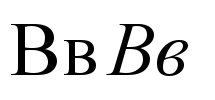Lesson Two: Yes/No Questions
In this lesson the basic sentence structure is introduced along with the particles used to create yes/no type questions in Mongolian. Word order in Mongolian is different than word order in English language sentences, and the rules for creating yes/no type questions relies on special question particles used at the end of statements.
The following video gives an introduction to the sentence structure used in Mongolian, the question particles, and examples of the particles' usage.
Once you get the hang of it, creating yes/no type questions is not very difficult in Mongolian. Take a statement, and turn it into a question by adding one of the four question particles following the rule of vowel harmony. The following table once again shows how the particles are used depending on the vowels in the last word of a sentence. Take note that it is only dependent on the very last word. Sentences ending in words with "male" vowels use "уу" or "юу" and sentences ending in words with "female" vowels use "үү" or "юү" to create yes/no type questions.
Try the following exercise to practice making yes/no type questions.
Going a step further, complete the next exercise.
And, one more time with the next exercise.
One common way you encounter yes/no types of questions is when greeting people in Mongolian. The most common greeting is "Сайн байна уу?", and you can see the "уу" question particle turning the statement "[You are] well" (Сайн байна) into the question "Are you well?"
The following video provides more information about how to use this greeting, as well as a few others.
Rounding out this lesson is the following musical exercise.







